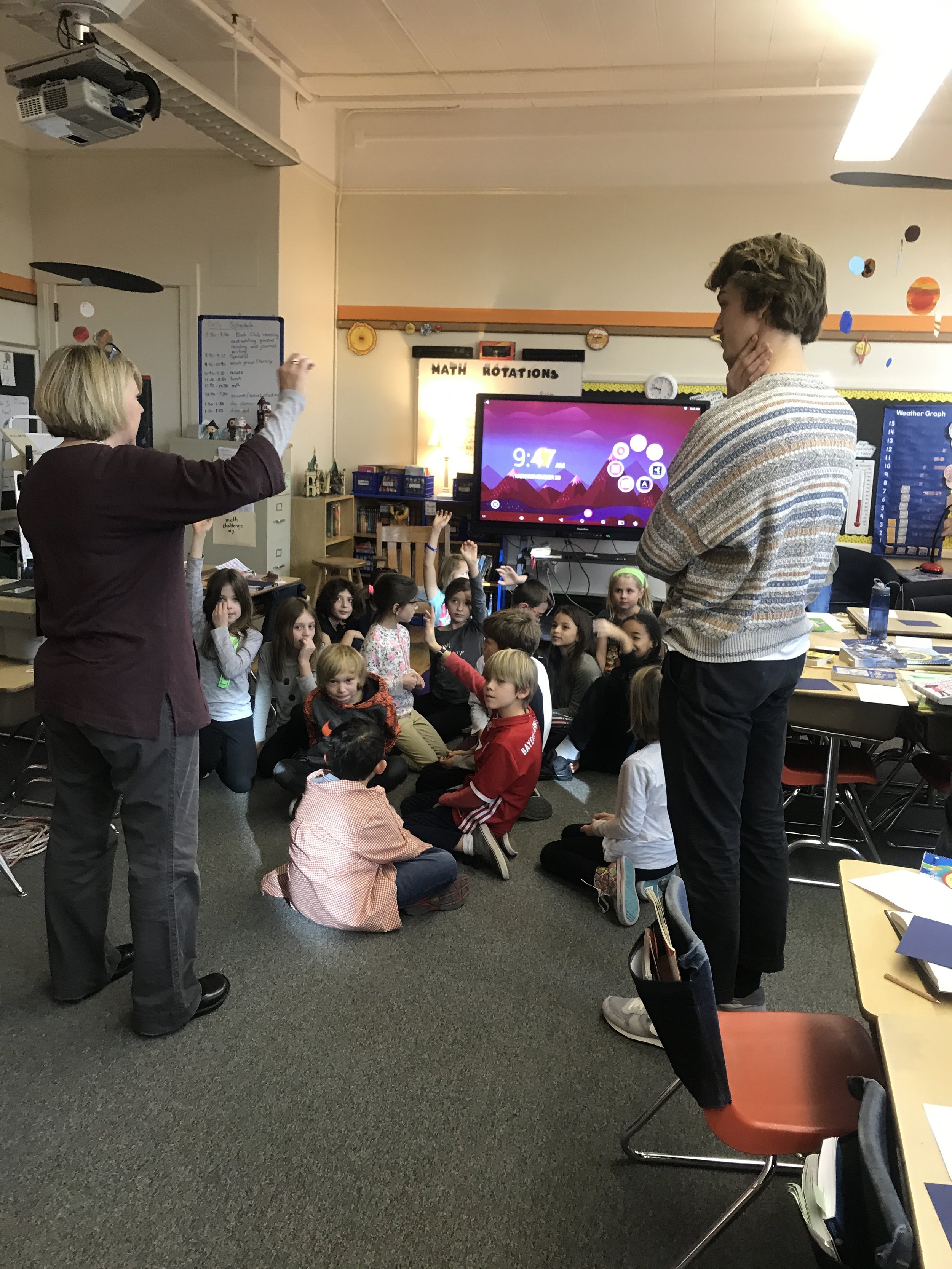Perpich residency, six hours
This week was my second to last week, and last full week at Perpich for practicum. The senior retrospective work was finished, so all students were back in their final classes for the semester. Thus I got to observe and work with Jeremy in a couple of new classes; an advanced drawing class and a papermaking/independent study printmaking class. We started on Monday with a critique of some of the junior students projects, while seniors in the class were beginning a self directed project. Jeremy opened the critique as usual by breaking down his critique protocol, which is based off Liz Lerman's VTS (visual thinking strategies) protocols. I've definitely learned a lot from him and how he runs critiques, in terms of stressing observation and looking at what is there, rather than beginning with asking questions. It's something that can be hard to do, especially as artists when we are so used to looking at and analyzing things (especially in academic environments where that sort of thing is stressed). Forcing oneself to do this, though, breaks down the preconceived notions we often carry as artists and gets us to look at the work on its own terms, which leads to a truer conversation about the work. This is something I've definitely had trouble with as an artist and viewer, but observing and working with Jeremy through this process, and leading it during my lessons at MIA has really deepened my appreciation for it.
After the drawing class, we headed upstairs to the print studio for the papermaking class. On Monday, Jeremy gave a demo on blending pulp, and the students spent much of the day shredding and accumulating pulp that was then made into paper over the next couple of days. Papermaking isn't something I use regularly in my practice, but I have done it a lot and have a great appreciation for it, and it was a fun process to go through with the students. Most of them had not made paper by hand before, and its something that I think is really valuable to do for any visual artist or maker, but especially those concerned with craft and construction. Going through the process of hand-making a commodity object like a sheet of paper is eye opening and enlightening, especially given the accessibility of the tools one uses. The students were blending pulp in standard kitchen blenders and creating the sheets using frames that could easily be built at home with inexpensive materials. Outside of strictly teaching the students how to make handmade paper, I feel that processes like this one go a long way in showing students what they can do as artists even with potentially limited means and materials.
Perpich has Monday off next week, so I'll only be in Wednesday, which will also be my last day of practicum. Its been a busy semester with practicum, but also an extremely enlightening and fulfilling one, and I'm excited to wrap things up with Jeremy and the students there in the coming week.









